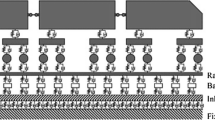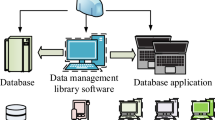Abstract
This research aims to study the possibility of predicting vibration levels from nearby metro lines using machine learning algorithms. As part of the study, a set of measurements was performed at various construction sites in a certain city, and through the analysis of the data obtained; the influential factors of vibration level were selected. The vibration levels predictions were conducted by building of the classification and regression tree, the random forest and the artificial neural network models. The obtained results of the application of these models are presented in this article; a comparative analysis of the predictions of the algorithms was made, on the basis of which it was established that the artificial neural network demonstrated the best performance in predicting the vibration level in the octave of 31.5 Hz (R2 = 0.914, MAE = 2.176, MAPE = 0.031). It is indicated that machine learning algorithms have good fitting and generalization ability and can be used at different stages of infrastructure design.










Similar content being viewed by others
Data Availability
Enquiries about data availability should be directed to the authors.
References
Afandi A, Lusi N, Catrawedarma IGNB, Rudiyanto B (2022) Prediction of temperature in 2 meters temperature probe survey in Blawan geothermal field using artificial neural network (ANN) method. Case Stud Therm Eng 38:102309. https://doi.org/10.1016/j.csite.2022.102309
Breiman L (2001) Random forests. Mach Learn 45(1):5–32
Breirnan L, Friedman J, Olshen R, Stone C (1984) Classification and regression trees. WadsWorth, Belrnont
Broch J (1984) Mechanical vibration and shock measurements, 2nd edn. Bruel Kjaer, Naerum
Dang L, Wang H, Li Y, Park Y, Oh C, Nguyen T, Moon H (2022) Automatic tunnel lining crack evaluation and measurement using deep learning. Tunn Undergr Space Technol 124:104472. https://doi.org/10.1016/j.tust.2022.104472
Ding J, Yin Z (2008) Serviceability analysis of building vibration induced by underground trains. J Vib Shock 27:96–99
Fausett L (1993) Fundamental of neural networks: architectures, algorithms, and applications
Feng Q, Liao C, Zhang L, Zhou H, Chen Y (2021) Evaluation of subway vibration influence on human exposure comfort of whole-body vibration. Noise Vib Control 41(6):237–243
Hardy G (1923) Some formulae in the theory of Bessel function. Proc Lond Math Soc 23(1923):1X
Hong T, Park S, Lee J (2022) Roles of subway speed and configuration on subway-induced seismic noises in an urban region. J Appl Geophys 202:104668. https://doi.org/10.1016/j.jappgeo.2022.104668
Hu M, Li W, Yan K, Ji Z, Hu H (2019) Modern machine learning techniques for univariate tunnel settlement forecasting: a comparative study. Math Probl Eng 2019:1–12. https://doi.org/10.1155/2019/7057612
Klyuev V (1978) Equipment and systems for measuring vibration, noise and shock. Mashinostroenie, Moscow
Kurbatsky E, Shakirov R, Shevchenko A, Nikitenko V (1994) Distortion of seismic signals on downhole seismic measurements. International Exposition & Sixty—Forth Annual Meeting Society of Exploration Geophysicists, Los Angeles
Lathi B, Green R (2014) Essentials of digital signal processing. Cambridge University Press
Liao J, Yue Y, Zhang D, Tu W, Cao R, Zou Q, Li Q (2022) Automatic tunnel crack inspection using an efficient mobile imaging module and a lightweight CNN. IEEE Trans Intell Transp Syst 23(9):15190–15203. https://doi.org/10.1109/TITS.2021.3138428
Liu H, Li W, Zha Z, Jiang W, Xu T (2018) Method for surrounding rock mass classification of highway tunnels based on deep learning technology. Chin J Geotech Eng. 40:1809–1817. https://doi.org/10.11779/CJGE201810007
Loh W, Shih Y (1999) Split selection methods for classification trees. Stat Sinica. 7:815–840
Patel N, Upadhyay S (2012) Study of various decision tree pruning methods with their empirical comparison in WEKA. Int J Comput Appl 60(12):1–6
Randall R (1977) Application of B&K equipment to frequency analysis. Sydney
Remoortere P (1979) Methodes et techniques de traitement du signal et applications aux mesures physiques: J. Max 379 pages. Masson, Paris, p 388
Song Y, Lu Y (2015) Decision tree methods: applications for classification and prediction. Shanghai Arch Psychiatry 27:130–135. https://doi.org/10.11919/j.issn.1002-0829.215044
Yan K, Dai Y, Xu M, Mo Y (2020) Tunnel surface settlement forecasting with ensemble learning. Sustainability 12(1):232. https://doi.org/10.3390/su12010232
Yang G, Li T, Ma C, Meng L, Zhang H, Ma J (2021) Intelligent rating method of tunnel surrounding rock based on one-dimensional convolutional neural network. J Intell Fuzzy Syst 42:1–19. https://doi.org/10.3233/JIFS-211718
Zaborov V (1989) Handbook on protection from noise and vibration of residential and public buildings. Budivelnik, Kiev
Zhao S, Wang M, Yi W, Yang D, Tong J (2022) Intelligent classification of surrounding rock of tunnel based on 10 machine learning algorithms. Appl Sci 12(5):2656. https://doi.org/10.3390/app12052656
Funding
The authors declare that no funds, grants, or other support were received during the preparation of this manuscript.
Author information
Authors and Affiliations
Corresponding author
Ethics declarations
Conflict of interest
The authors have no relevant financial or non-financial interests to disclose.
Additional information
Publisher's Note
Springer Nature remains neutral with regard to jurisdictional claims in published maps and institutional affiliations.
Rights and permissions
Springer Nature or its licensor (e.g. a society or other partner) holds exclusive rights to this article under a publishing agreement with the author(s) or other rightsholder(s); author self-archiving of the accepted manuscript version of this article is solely governed by the terms of such publishing agreement and applicable law.
About this article
Cite this article
Mark, M., Yong, F., Hu, L. et al. Prediction of Subway Vibration Values on the Ground Level Using Machine Learning. Geotech Geol Eng 41, 3753–3766 (2023). https://doi.org/10.1007/s10706-023-02486-6
Received:
Accepted:
Published:
Issue Date:
DOI: https://doi.org/10.1007/s10706-023-02486-6




